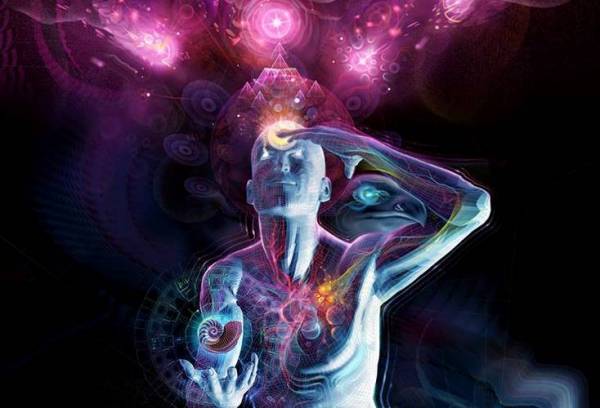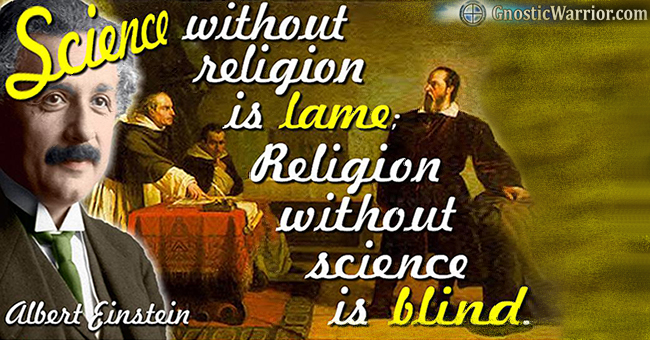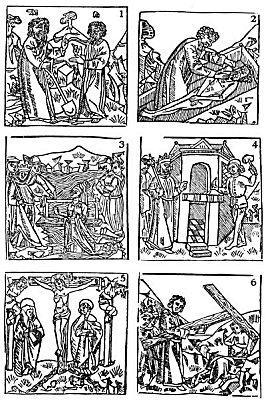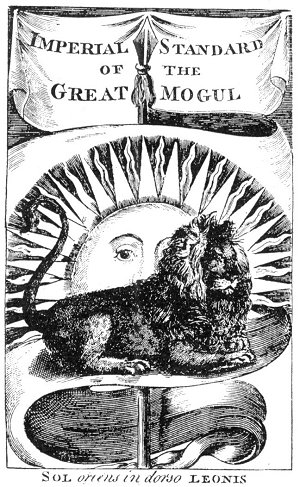primeval darkness and opens his understanding. “After this Brahma issues from the universal egg — (infinite chaos) as light, for his understanding is now opened, and he sets himself to work; he moves on the eternal waters, with the spirit of God within himself; in his capacity of mover of the waters he is Narayana.”
The lotus, the sacred flower of the Egyptians, as well as the Hindus, is the symbol of Horus as it is that of Brahma. No temples in Thibet or,
Page 92
Nepaul are found without it; and the meaning of this symbol is extremely suggestive. The sprig of lilies placed in the hand of the archangel, who offers them to the Virgin Mary, in the pictures of the “Annunciation,” have in their esoteric symbolism precisely the same meaning. We refer the reader to Sir William Jones. With the Hindus, the lotus is the emblem of the productive power of nature, through the agency of fire and water (spirit and matter). “Eternal!” says a verse in the Bhagavad Gita, “I see Brahma the creator enthroned in thee above the lotus!” and Sir W. Jones shows that the seeds of the lotus contain — even before they germinate — perfectly-formed leaves, the miniature shapes of what one day, as perfected plants, they will become; or, as the author of The Heathen Religion, has it — “nature thus giving us a specimen of the preformation of its productions”; adding further that “the seed of all phoenogamous plants bearing proper flowers, contain an embryo plantlet ready formed.”
With the Buddhists, it has the same signification. Maha-Maya, or Maha-Deva, the mother of Gautama Buddha, had the birth of her son announced to her by Bhodisat (the spirit of Buddha), who appeared beside her couch with a lotus in his hand. Thus, also, Osiris and Horus are represented by the Egyptians constantly in association with the lotus-flower.
These facts all go to show the identical parentage of this idea in the three religious systems, Hindu, Egyptian and Judaico-Christian. Wherever the mystic water-lily (lotus) is employed, it signifies the emanation of the objective from the concealed, or subjective — the eternal thought of the ever-invisible Deity passing from the abstract into the concrete or visible form. For as soon as darkness was dispersed and “there was light,” Brahma’s understanding was opened, and he saw in the ideal world (which had hitherto lain eternally concealed in the Divine thought) the archetypal forms of all the infinite future things that would be called into existence, and hence become visible. At this first stage of action, Brahma had not yet become the architect, the builder of the universe, for he had, like the architect, to first acquaint himself with the plan, and realize the ideal forms which were buried in the bosom of the Eternal One, as the future lotus-leaves are concealed within the seed of that plant. And it is in this idea that we must look for the origin and explanation of the verse in the Jewish cosmogony, which reads: “And God said, Let the earth bring forth . . . the fruit-tree yielding fruit after his kind, whose seed is in itself.” In all the primitive religions, the “Son of the Father” is the creative God — i.e., His thought made visible; and before the Christian era, from the Trimurti of the Hindus down to the
Page 93
three kabalistic heads of the Jewish-explained scriptures, the triune godhead of each nation was fully defined and substantiated in its allegories. In the Christian creed we see but the artificial engrafting of a new branch upon the old trunk; and the adoption by the Greek and Roman churches of the lily-symbol held by the archangel at the moment of the Annunciation, shows a thought of precisely the same metaphysical significance.
The lotus is the product of fire (heat) and water, hence the dual symbol of spirit and matter. The God Brahma is the second person of the Trinity, as are Jehovah (Adam-Kadmon) and Osiris, or rather Pimander, or the Power of the Thought Divine, of Hermes; for it is Pimander who represents the root of all the Egyptian Sun-gods. The Eternal is the Spirit of Fire, which stirs up and fructifies and develops into a concrete form everything that is born of water or the primordial earth, evolved out of Brahma; but the universe is itself Brahma, and he is the universe. This is the philosophy of Spinoza, which he derived from that of Pythagoras; and it is the same for which Bruno died a martyr. How much Christian theology has gone astray from its point of departure, is demonstrated in this historical fact. Bruno was slaughtered for the exegesis of a symbol that was adopted by the earliest Christians, and expounded by the apostles! The sprig of water-lilies of Bhodisat, and later of Gabriel, typifying fire and water, or the idea of creation and generation, is worked into the earliest dogma of the baptismal sacrament.

Moe is the founder of GnosticWarrior.com. He is a father, husband, author, martial arts black belt, and an expert in Gnosticism, the occult, and esotericism.


![How a blind woman, praying in the burial-place of that monastery, was restored to her sight [675 A.D.?] | Book 4 | Chapter 10 How a blind woman, praying in the burial-place of that monastery, was restored to her sight [675 A.D.?] | Book 4 | Chapter 10](https://www.gnosticwarrior.com/wp-content/plugins/contextual-related-posts/default.png)



